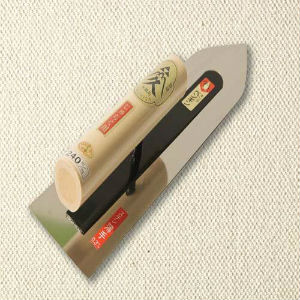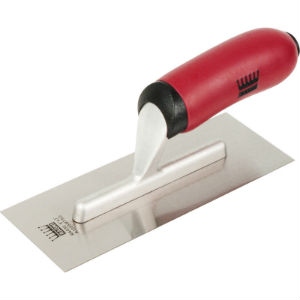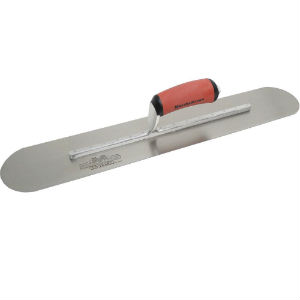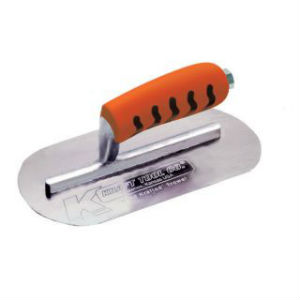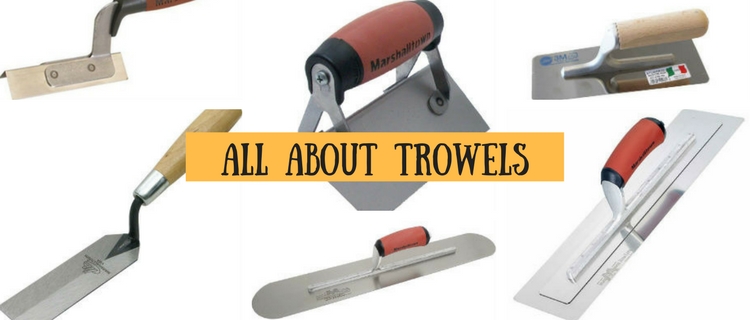
There are many different kinds of trowels that are used in the stucco process and each one is intended for a special purpose.
Knowing which application each trowel is suited for can make the job much easier and can make all the difference in the world.
The Different Trowel Features You Probably Weren't Aware Of:
The Different Metal Finishes Available: There are so many different metals used for trowels these days and each one serves a specific purpose or is better suited for more specific applications. Let's take a closer look at some of the different metals you might find...
Stainless Steel
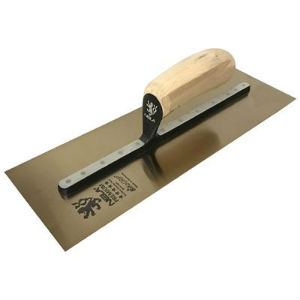
Blue Steel
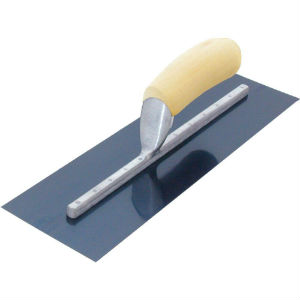
Standard (Carbon) Steel
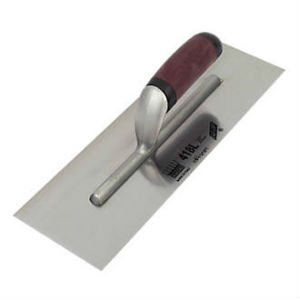
Stainless Steel Trowels: These will not typically rust. They can be used for just about anything and are a higher quality trowel that lasts longer and will not discolor finish materials. These are recommended for white finishes because they will not leave a discoloration on the white finish, which can be an issue if you are using an older, non-stainless trowel.
Blue Steel Trowels: The blue steel is typically a little thinner than a carbon steel which allows the blade to flex a little bit. These are great for smoother finishes or any type of application that will require a bit of feathering in to an existing material.
Standard (Carbon) Steel Trowels: These are the most common types of trowels out there (the material, anyways) and is strong, has little to no flex to them and are designed to last quite a while, if not exposed to weather. These will develop rust after a few months or years, which you will need to get rid of using sand paper and some oil.
All About The Handles: This is not that important to most people but there are long-time stucco and concrete people who have been in the trades a very long time and swear by a certain type of handle, so I thought it was at least worth mentioning...
Wooden
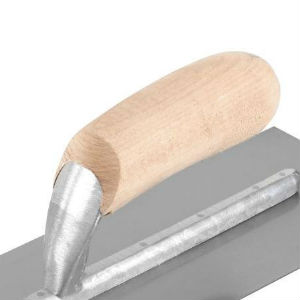
Softer Grip Handles
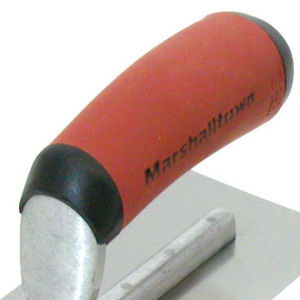
Plastic Handles
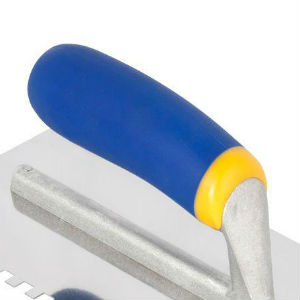
Wooden Handles: Coming Soon!
Softer Grip Handles: Coming Soon!
Plastic Handles: Coming Soon!
Trowels Sizes: There are different sizes of trowels that are better for certain things, not just the length of the tool but the width as well. A basic rule is that the wider trowels are used for vertical type of applications and more narrow trowels are used for finishing (concrete, stucco, etc.). This is just a "general rule" and there are exceptions but for the most part, it is correct.
More Coming Soon!
Square Plastering Trowels (The "Swiss Army Knife" Of Trowels):
This is the typical trowel used when applying base coats and some finish coats. It is rectangular in shape and has sharp corners when it is brand new. They come in may different sizes and are wider than finishing trowels that are used for finishing concrete surfaces. You can find a lot of these online, with a much better selection than home improvement store would have.
The average width of a plastering trowel is about 4.5 inches and the lengths can vary but typically range from 11" - 16". An eleven inch trowel is more than adequate for plastering and is tough to use, especially for novices, anything larger is harder to work with and takes practice!
The Basics: The two trowels on the right are pretty standard in the plastering industry. The are a bit wider, to hold more material and come in a steel and stainless steel metal.
The handles are a little different too and can make it more comfortable on the hands, depending on if you like a more firm handle or a softer one.
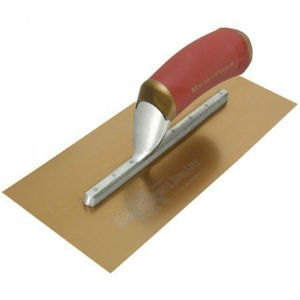
Standard Steel Trowel With A Softer Handle Material
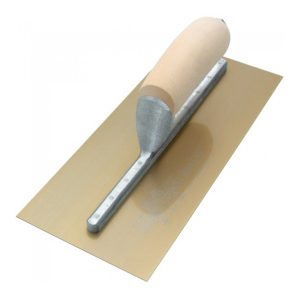
A Stainless Steel Trowel With A Wooden Handle
Smaller Trowels: The trowel on the right shows a smaller trowel that is VERY CONVENIENT for narrow spaces where a standard sized trowel wouldn't normally fit.
This one measures 3" wide and about 8" in length and uses a soft grip type of handle. Notice the size of the handle, compared to the size of the trowel. These are quite hard to find everywhere but are available online.
Pool Trowels For Pools, Stucco Finishes/Base Coats And Concrete:
Standard Pool Trowels: These are referred to as pool or swimming pool trowels and are made for curved, smooth surfaces.
They are usually used in finish coats that require minimal lines and are smooth in appearance. These have rounded ends, in order to minimize the amount of lines that each stroke of the trowel makes. Again, the selection online is way better than any one store.
Larger Pool Trowels: There are many different sizes that a pool trowel can come in and the larger one shown on the right measures 24" by 5", a massive one!
These larger ones are hard to spread stucco base coat with but do come in handy for finishing work, if you can manage them. They are really great for finishing concrete though, especially when you are working with gravity's help.
Smaller Pool Trowels (Mini Pool Trowel): These are just like the smaller, square trowels we looked at but have the rounded edges, instead of square ones, to minimize the appearance of lines.
The mini pool trowel on the right shows just how small the trowel is, when compared to the handle. This one measures approximately 7.5" long and 4" in width. Here is a link to Amazon, where they have a bunch to choose from.
Trowels For Inside And Outside Corners:
Sometimes, having an inside or outside corner tool (trowel) will greatly increase the look and time it takes to apply materials to a corner, whether it is an outside or inside one. These are pretty basic and do have different lengths, widths and so on but their basic purpose and how they work is very similar. Online is the way to go, if you plan on getting one for yourself because there are so many more to choose from than a store would have.
Outside Corner Tools: There are a few different designs but the one on the right is the "more common" version. This one has shorter flanges than most of the other ones out there.
These can have a sharp 90 degree angle, like the one shown or a bull nose (rounded) edge to them, like the one below.
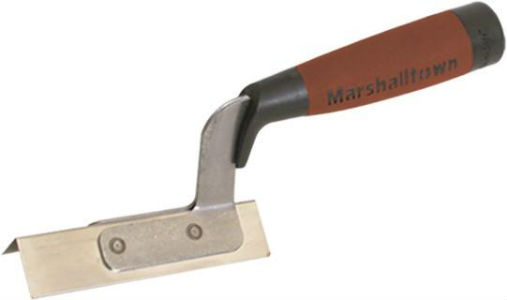
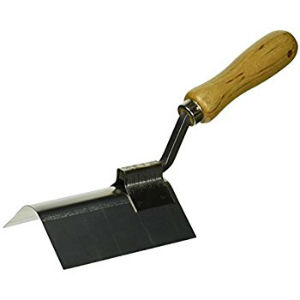
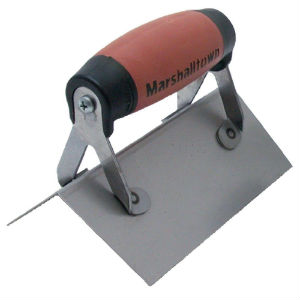
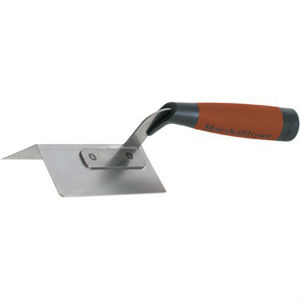
Inside Corner Tools: These are a little more common than an outside tool is, just because corner aid is used on the outside corners of stucco and are not needed.
They have standard features, comparable to an outside corner tool but also have adjustable models that can get wider or more narrow, depending on the angle of the corner. Pretty neat!
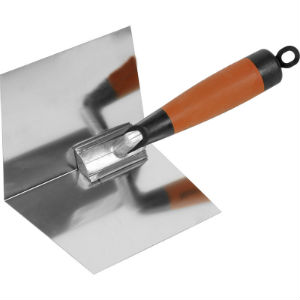
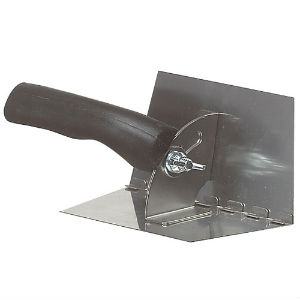
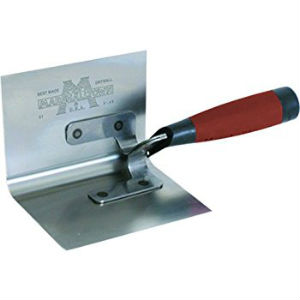
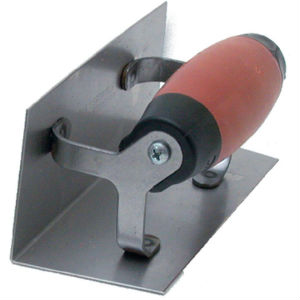
What About Venetian Trowels?
Coming Soon!
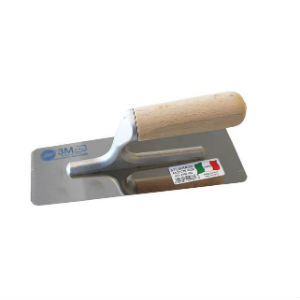
More Flexible Trowels (For Smoother Finishing)
There are trowels out there that have a more flexible edge to them, making for a tighter and smoother finish.
Take a look at the trowel on the right to see how they differ from traditional trowels. They have a separate plate on top that allows the trowel surface to be much thinner and much more flexible than a typical trowel.
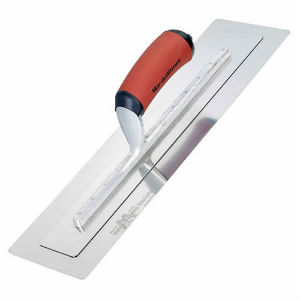
Marshalltown has a few different sizes of these types of trowels and they call them their Permaflex Line of trowels. I have had a really hard time finding these and are usually a special order item at a specialty supplier (stucco, tile, masonry, etc.) but I did end up finding them online. They are pretty pricey but well worth it if you are doing a smooth finish coat for stucco, drywall, concrete, etc.
Margin Trowels:
These are basically small square trowels attached to a handle that are used for a couple of different things. They fit in tight spots, where a larger trowel wouldn’t fit, like behind tubes, electrical connectors and plumbing fixtures. They are also great for mild scraping on corners and edges that need a little touch-up before the next coat of stucco is applied. Again, the selection is way better online and the pricing is some of the best I've seen.
Shorter Margin Trowel
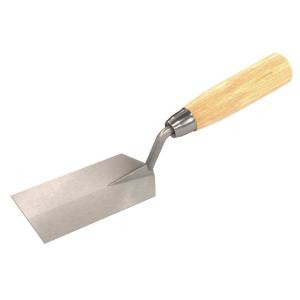
Medium Length Margin
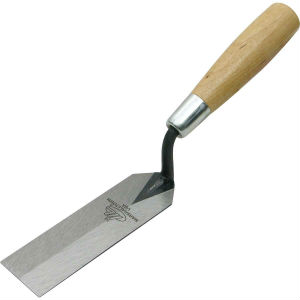
A Notched Margin Trowel
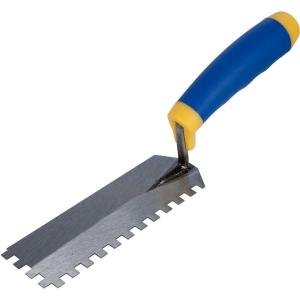
Pointer Trowels:
These are just like margin trowels but triangular in shape and are used when a traditional trowel or a margin trowel will not fit. These areas are typically found at the peaks of a gable and other triangular shaped sections of the building. The point really helps get into some of those "tighter spaces" on projects.
Stucco plasterers will usually use a smaller pointing trowel and the larger ones will typically be seen by masons laying brick, stone or block. If you do end up getting one for yourself, be sure to choose the right size for your project.
Smaller Pointing Trowel
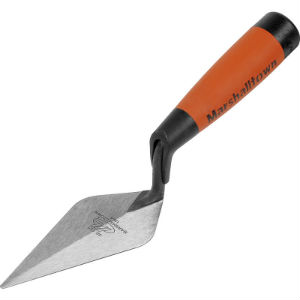
Large Pointer Trowel
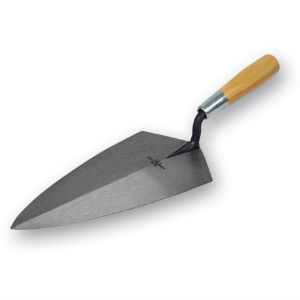
Bullnose Pointing Trowel
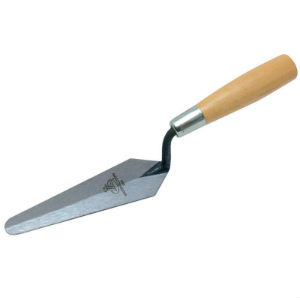
Notched Trowels:
These are mainly used in tile applications, but can be used as a scratcher or scarifier in the scratch phase of three coat stucco. These have a notched edge on two sides, usually the top and one of the longer edges of the trowel. They give the second coat a rough surface to stick to by leaving evenly spaced lines that resemble a “corn row” pattern.
Here is a link to Amazon, so you can price out the various trowels. As a side note, Amazon has the best prices for these trowels and a much better selection (in general). If you find them for a better price and/or a better selection, let me know and I’ll post them here, thanks.
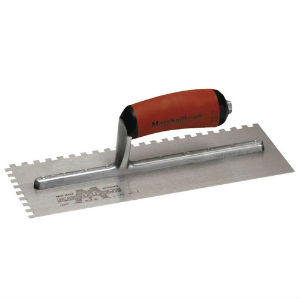
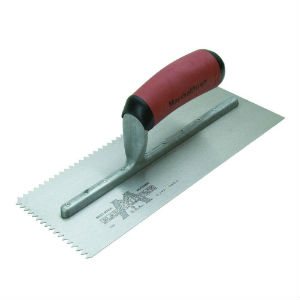
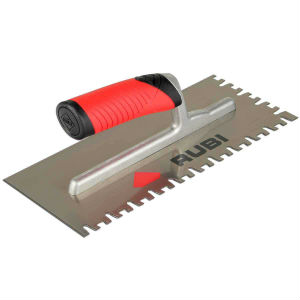
Specialty Trowels:
There are tons of trowels that I would consider to be more "specialty" type of trowels and are not as common as some of the other ones out there that most people are familiar with but do serve their purpose and serve it well! Here is a short list of some of these "specialty" trowels:
Rounded End Finishing Trowel: This is a very interesting trowel and it combines the ability of a pool trowel and a square trowel. The back end is square, which can get into tose 90 degree corners that a pool trowel normally wouldn't be able to get.
The rounded front edge is great because you can achieve a fairly smooth surface with minimal lines, a task that a square trowel isn't best suited for. The best of both worlds!
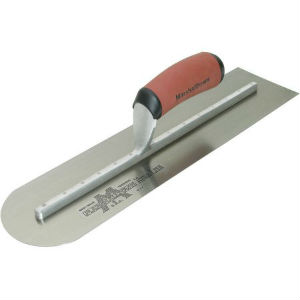
Pipe Trowel: Coming Soon!
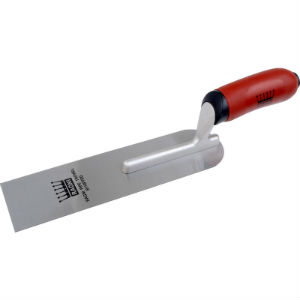
Japanese Trowel: Coming Soon!
